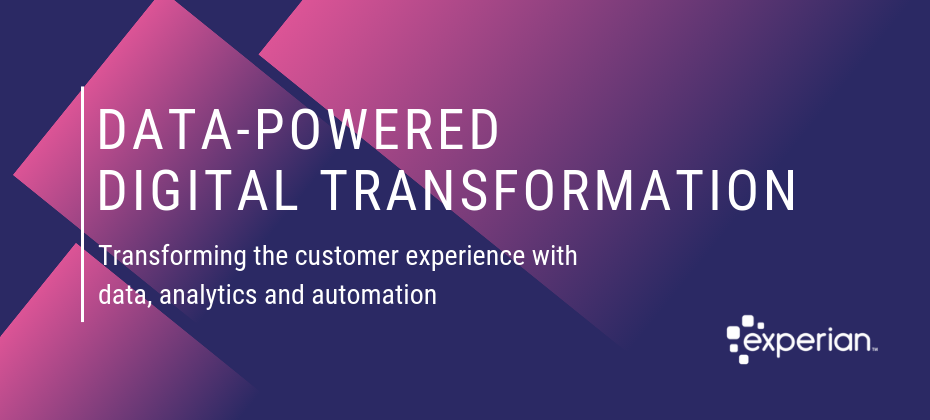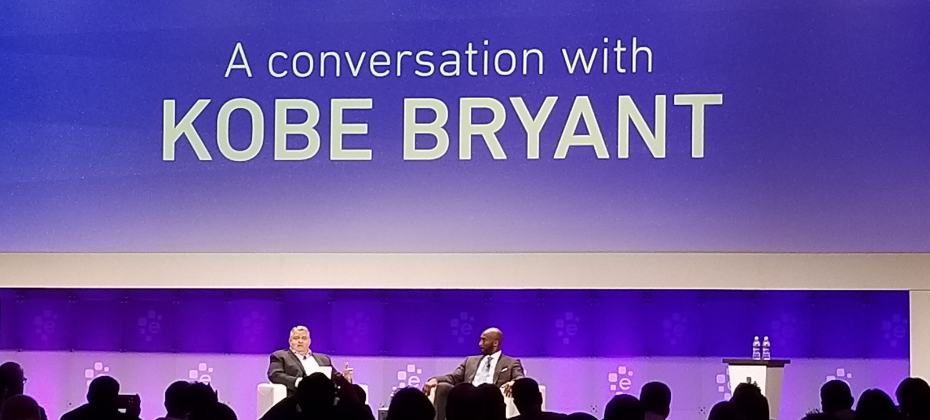Data & Analytics

What is CECL? CECL (Current Expected Credit Loss) is a new credit loss model, to be leveraged by financial institutions, that estimates the expected loss over the life of a loan by using historical information, current conditions and reasonable forecasts. According to AccountingToday, CECL is considered one of the most significant accounting changes in decades to affect entities that borrow and lend money. To comply with CECL by the assigned deadline, financial institutions will need to access much more data than they’re currently using to calculate their reserves under the incurred loss model, Allowance for Loan and Lease Losses (ALLL). How does it impact your business? CECL introduces uncertainty into accounting and growth calculations, as it represents a significant change in the way credit losses are currently estimated. The new standard allows financial institutions to calculate allowances in a variety of ways, including discounted cash flow, loss rates, roll-rates and probability of default analyses. “Large banks with historically good loss performance are projecting increased reserve requirements in the billions of dollars,” says Experian Advisory Services Senior Business Consultant, Gavin Harding. Here are a few changes that you should expect: Larger allowances will be required for most products As allowances will increase, pricing of the products will change to reflect higher capital cost Losses modeling will change, impacting both data collection and modeling methodology There will be a lower return on equity, especially in products with a longer life expectancy How can you prepare? “CECL compliance is a journey, rather than a destination,” says Gavin. “The key is to develop a thoughtful, data-driven approach that is tested and refined over time.” Financial institutions who start preparing for CECL now will ultimately set their organizations up for success. Here are a few ways to begin to assess your readiness: Create a roadmap and initiative prioritization plan Calculate the impact of CECL on your bottom line Run altered scenarios based on new lending policy and credit decision rules Understand the impact CECL will have on your profitability Evaluate current portfolios based on CECL methodology Run different loss methods and compare results Additionally, there is required data to capture, including quarterly or monthly loan-level account performance metrics, multiple year data based on loan product type and historical data for the life of the loan. How much time do you have? Like most accounting standards, CECL has different effective dates based on the type of reporting entity. Public business entities that file financial statements with the Security and Exchange Commission will have to comply by 2020, non-public entity banks must comply by 2022 and non-SEC registered companies have until 2023 to adopt the new standard. How can we help: Complying with CECL may require you to gather, store and calculate more data than before. Experian can help you comply with CECL guidelines including data needs, consulting and loan loss calculation. Experian industry experts will help update your current strategies and establish an appropriate timeline to meet compliance dates. Leveraging our best-in-class industry data, we will help you gain CECL compliance quickly and effectively, understand the impacts to your business and use these findings to improve overall profitability. Learn more

Many may think of digital transformation in the financial services industry as something like emailing a PDF of a bank statement instead of printing it and sending via snail mail. After working with data, analytics, software and fraud-prevention experts, I have found that digital transformation is actually much more than PDFs. It can have a bigger and more positive influence on a business’s bottom line – especially when built on a foundation of data. Digital transformation is the new business model. And executives agree. Seventy percent of executives feel the traditional business model will disappear in the next five years due to digital transformation, according to recent Experian research. Our new e-book, Powering digital transformation: Transforming the customer experience with data, analytics and automation, says, “we live in a world of ‘evolve or fail.’ From Kodak to Blockbuster, we’ve seen businesses resist change and falter. The need to evolve is not new. What is new is the speed and depth needed to not only compete, but to survive. Digital startups are revolutionizing industries in months and years instead of decades and centuries.” So how do businesses evolve digitally? First, they must understand that this isn’t a ‘one-and-done’ event. The e-book suggests that the digital transformation life cycle is a never-ending process: Cleanse, standardize and enrich your data to create features or attributes Analyze your data to derive pertinent insights Automate your models and business practices to provide customer-centric experiences Test your techniques to find ways to improve Begin the process again Did you notice the key word or phrase in each of these steps is ‘data’ or ‘powered by data?’ Quality, reliable data is the foundation of digital transformation. In fact, almost half of CEOs surveyed said that lack of data or analytical insight is their biggest challenge to digital transformation. Our digital world needs better access to and insight from data because information derived from data, tempered with wisdom, provides the insight, speed and competitive advantage needed in our hypercompetitive environment. Data is the power behind digital transformation. Learn more about powering your digital transformation in our new e-book>

Consumer credit trends are continuously changing, making it imperative to keep up with the latest developments in originations, delinquencies on mortgages, credit cards and auto loans. By monitoring consumer behavior and market trends over time, you can predict and prepare for potential issues within each market. In this 30-minute webinar, our featured speakers, Gavin Harding, Experian Senior Business Consultant, and Alan Ikemura, Experian Data Analytics Senior Product Manager, reveal Q1 2019 market intelligence data and explore recent advances in consumer credit trends. Watch our on-demand webinar

The universe has been used as a metaphor for many things – vast, wide, intangible – much like the credit universe. However, while the man on the moon, a trip outside the ozone layer, and all things space from that perspective may seem out of touch, there is a new line of access to consumers. In Experian's latest 2019 State of Alternative Credit Data report, consumers and lenders alike weigh in on the growing data set and how they are leveraging the data in use cases across the lending lifecycle. While the topic of alternative credit data is no longer as unfamiliar as it may have been a year or two ago, the capabilities and benefits that can be experienced by financial institutions, small businesses and consumers are still not widely known. Did you know?: - 65% of lenders say they are using information beyond the traditional credit report to make a lending decision. - 58% of consumers agree that having the ability to contribute payment history to their credit file make them feel empowered. - 83% of lenders agree that digitally connecting financial account data will create efficiencies in the lending process. These and other consumer and lender perceptions of alternative credit data are now launched with the latest edition of the State of Alternative Credit Data whitepaper. This year’s report rounds up the different types of alternative credit data (from alternative financial services data to consumer-permissioned account data, think Experian BoostTM), as well as an overview of the regulatory landscape, and a number of use cases across consumer and small business lending. In addition, consumers also have a lot to say about alternative credit data: With the rise of machine learning and big data, lenders can collect more data than ever, facilitating smarter and more precise decisions. Unlock your portfolio’s growth potential by tapping into alternative credit data to expand your consumer universe. Learn more in the 2019 State of Alternative Credit Data Whitepaper. Read Full Report View our 2020 State of Alternative Credit Data Report for an updated look at how consumers and lenders are leveraging alternative credit data.

Day 2 at this year’s Vision conference was fueled with new technology and inspiration. The morning session opened with Robert Boxberger, Experian President, Decision Analytics, and also featured two live demos, one on Experian’s solution for the upcoming CECL compliance deadline and the second for mobile credit, including two use cases on instant issuance and lead generation, which has resulted in a 28% conversion rate of hot leads for one of Experian’s marquee clients. Keynote Speaker: Aimée Mullins "Get comfortable with the uncomfortable" was just one of the mantras shared on Tuesday morning by Aimée Mullins, an actor, Olympian, TEDTalk speaker, and one of the youngest honorees to be inducted into the National Women’s Hall of Fame, among many other accomplishments. “It is our uniqueness that’s our greatest asset that we can leverage for our greatest strength,” said Mullins during her keynote centered on achieving the “impossible.” As a bi-lateral amputee (or “double BK” also known as double below-the-knee amputee, as she referenced), Mullins had doctors and experts tell her and her parents what she would not be able to do. Instead, she encouraged Tuesday’s audience to never stop thinking like a child, to use their curiosity to find new ways where you want to go, and to practice curiosity like a sport to keep from getting comfortable, and therefore static. “It made my not knowing what I can do so much more powerful than an expert's presumption of what he thought I could do,” she said. Session Highlights – Day 2 Consumer Trust What engenders trust as consumers? And what does it take to build online trust? With 51% of new account fraud victims personally knowing the perpetrator and 3.4 billion total losses from fraudulent account openings (Javelin Feb 2019), there are five key components to building trust: digital adoption, transparency, fraud management, recognition and authentication. Today’s consumers want to use the digital channel, have both security and ease of access, be recognized, know how their personal information is being used, and engage and trust with biometrics. Artificial Intelligence – Chat Bots and Beyond According to Gartner, “'Conversational AI-first' will supersede ‘cloud-first,’ ‘mobile first’ as the most important high-level imperative for the next 10 years.” As evidenced by Google Duplex’s realistic conversations with humans, including the use of “uh” and “um,” conversational AI is positioned to redefine the next generation of human interface, aimed at achieving better customer satisfaction and elevate the customer relationship. Marketing Analytics The marketing analytics landscape is changing. Today’s marketing problems – including the always limited budget and need to produce greater ROI – require tactical strategies to target the right consumers. Enter Experian’s AscendTM marketing platform. Leveraging this tool, including its neural networks that were demonstrated Monday morning, helps gain new insights into consumer behavior. Fraud in the Digital Wild West A panel discussion featuring representatives from Merchant Risk Council, USAA and Alliance Data compared fighting fraud to herding cats. Challenges discussed included the ongoing struggle to find balance between limiting friction during the authentication process, while also protecting customers, as well as fraudsters’ tendencies to tap into victims’ emotions and curiosity (think phishing schemes). As one of the panelists offered as a piece of advice, “Fraudsters share best practices, so should we.” Visibility for the Invisibles People are more than the sum of their parts. The traditional credit score may show a consumer’s reputation, but layering trended and alternative data sets adds their character. Not only can trended data and alternative credit data – including leveraging education attributes – make invisible consumers visible, they can also reveal that a consumer with a presumably superlative credit score is actually a “credit zombie.” These data sets enable the opportunity to create first chances, drive second chances and re-evaluate risk, while also driving a strong growth strategy. CECL After reviewing the basics of CECL and the upcoming deadlines (ranging from Q1 2020 to Q1 2022), a review of CECL compliance challenges and potential product changes preceded a modeling techniques case study and a list of key impacts to businesses. Those impacts include: product profitability, loss forecasting methodology, data management and processes and capital ratios. Experian’s CECL forecasting solution leverages Experian’s extensive historical data and Ascend Analytical Sandbox. Using a best practice modeling pipeline to improve efficiency and reduce operational risks, the solution combines advanced machine learning, traditional model techniques and modeling experience to improve performance and reduce risk of overfitting. Keynote Speaker: Kobe Bryant Kobe Bryant closed out the day with stories from his highly-decorated 20-year career with the Los Angeles Lakers, some tips on trash talk and lessons in leadership. “I had to figure out how to be undeniable,” Bryant said, on competing for minutes at the start of his career. In addition to his basketball legacy, including wining five NBA championships, being named an NBA MVP, a two-time NBA Finals MVP and winning two Olympic gold medals, Bryant also launched the Kobe and Vanessa Bryant Family Foundation, hosts the Kobe Academy and has formed Kobe Inc. He’s a storyteller, an Oscar winner, and his name has become synonymous with standing for uncompromising excellence. How to be successful? “Make sure you have the right people on the team,” Bryant said. “Passionate. Borderline obsessive.” One of his key takeaways from his basketball career that translates to his leadership on and off the court happened when his pre-game and game time thinking shifted from internal to external. “You have to put yourself 2nd, 3rd, 4th…you have to put the team first,” Bryant said. For more coverage, follow #ExperianVision on Twitter or check the Experian Insights LinkedIn page.

“Experian is transforming our business from a traditional credit bureau to a true technology and software provider,” said Craig Boundy, CEO of Experian, North America, as part of his opening remarks Monday morning to kick off the 2019 Experian Vision Conference. “We are committed to working as a force of good.” Covering the themes of financial inclusion, giving consumers control of their lives and better outcomes, a digital-first society, and the latest trends in fraud and security, Boundy addressed a crowd of over 850. Alex Lintner, Experian’s Group President, gave a quick history of the past 3,000 years, from the first credit card, to the addition of wheels to a suitcase, to the iPhone and artificial intelligence. “Innovation is not invention,” Lintner said. He gave the example of the iPhone and how a tear down analysis revealed there were no new elements; however, it was the translation of an idea into a good or service that benefited everyone (as the entire audience raised their hand when asked who had a smart phone). Lintner’s mainstage presentation also featured three live demos, including how the Ascend Technology Platform takes complex model building and outputs from days and weeks to a few clicks, to the incorporation of Small Business Financial Exchange (SBFE) data into the Ascend Analytical Sandbox (incorporating more than 17 years of small business tradeline data and 150 predictive attributes) and lastly, Experian Boost, which according to a live tracker, has boosted consumer credit scores by a total of 3.2 million points, as of this morning, since its launch eight weeks ago. Keynote Speaker: Gary D. Cohn Gary D. Cohn, Former Director of the U.S. National Economic Council, was Monday morning’s keynote speaker. He weighed in on the domestic and global economy, policy issues, financial institutions’ responsibilities and some of his predictions. Cohn brought attention to the ever-changing financial services space, including new forms of encryption and the world of biometric security, calling the financial services industry the “tip of the spear” when it comes to the digitization of the world. Session Highlights - Day 1 Machine Learning From the building blocks of neural networks to artificial intelligence, machine learning has been used in the areas of financial services that do not have adverse actions – think fraud, ID, collections. As we look to harness machine learning for models and other spaces (including adverse action), it’s important to delineate descriptive data (what’s happening now); predictive data (what’s happening in the future); prescriptive data (what am I going to do now); and cognitive data (are we asking the right question?). In addition, it’s necessary to address the five advanced analytic drivers including customer experience, cost, risk and loss, growth and compliance. Home Equity & Lending US macroeconomic trends show consumer confidence is still on an upward trend. While investor confidence is a little volatile, the GDP remains strong (though slightly slowing down) and unemployment is low and forecasted to remain low. Since 2006, the US hasn’t returned in the HELOC space. Mortgage and personal loans are up 20% and 13% respectively, while mortgages have dropped 1% and HELOCs have dropped 2%. With an estimated market potential of over $700 billion, HELOCs may be an untapped credit line given the strength of the economy. Identity Evolution From dumpster divers, aka pulling receipts out of dumpsters behind businesses, to today’s identity-based authentication, there’s been an evolution of how identity is defined as well as its corresponding risks. According to Experian’s Global Fraud & Identity Report, 74% of consumers value security as the most important part of the online experience (over convenience and personalization). However, 74% of consumers abandoned a shopping session that required too much information, and 72% of consumers said they were willing to share more data if it meant a seamless experience. What does this mean? Consumers want it all. Identity today now includes proxies and activity, which can also mean greater risk. Because of aggregators and other associated entities acting on a consumer’s behalf, there are lots of nuances that will need to be looked through. Consumer-Permissioned Data In order to be more consumer-centric, there are four levers through which consumers are given control: data accuracy, knowing their financial profile, the ability to improve their scores (via Experian BoostTM and UltraFICOTM) and protecting consumers when they permission access to their identity credentials. Using Experian Boost, consumers have seen an average increase of 13 points for consumers with positive changes. Additionally, using alternative credit data, financial institutions can score more people and score more accurately. One hundred million consumers could gain greater access to credit with consumer-permissioned data sources. --- Meanwhile, the tech showcase featured over 20 demos covering alternative data, digital credit marketing, consumer empowerment, fraud and identity, integrated decisioning and technology. More insights from Vision to come. Follow @ExperianVision and #ExperianVision on Twitter to see more of the action.

Experian’s 38th annual Vision Conference kicks off on Sunday, May 5 in San Antonio, Texas. The sold-out thought leadership conference, is known for driving discussions on the industry’s hard-hitting topics as well as introducing the latest and greatest in technology, innovation and data science. “For 38 years, Experian’s Vision Conference has connected business leaders to new ideas and solutions through cutting edge data and insights. Our goal is to power opportunities for you to target new markets, grow existing customer bases, improve response rates, reduce fraud and increase profits by using our data, analytics and technology. The intimate setting of the conference allows for unique networking opportunities with the industry’s most sought-after thought leaders,” said Klaudette Christensen, Experian’s Chief Operations Officer. A few spotlight sessions include: Several sessions about machine learning and artificial intelligence, highlighting opportunities related to best practices, underwriting and fraud detection A deep dive into the modern mortgage, leveraging insights on home equity and how to leverage data and analytics to redefine the process as it’s known today Sessions on credit delinquency, collections and the Great Recession Marketing analytics and the latest releases from Experian’s Ascend Platform Sessions on advanced analytics and integrated decisioning as they relate to commercial and consumer insights The event, which runs through Tuesday evening, continues its tradition of featuring several noteworthy keynote speakers. On Monday, Gary D. Cohn, American business leader, philanthropist and former Director of the U.S. National Economic Council, will kick off the event. On Tuesday, Aimée Mullins will take the stage discussing what is “possible” by drawing from her experiences as a record-breaking Olympic athlete, model and actress. The closing keynote will feature five-time NBA Champion and two-time Olympic Gold Medalist, Kobe Bryant. The event will also include a Tech Showcase, featuring hands-on demos for attendees to experience. Stay tuned for additional highlights and insights on our social media platforms throughout the course of the conference. Follow Experian Insights on Twitter and LinkedIn and check out #ExperianVision.

Do more with less. Once the mantra of the life-hacking movement, it seems to be the charge given to marketers across the globe. Reduce waste; increase conversion rates; customize messages at a customer level; and do it all faster and more efficiently (read cheaper) than you did last quarter. The marketing challenges facing all companies seem to be more pronounced for financial institutions – not surprising for an industry with a reputation for late adoption. But doing more with less is not just a catchphrase thrown around by lean-obsessed consultants, it’s a response to key changes and challenges in the market. Here are 3 of the top marketing challenges creating business problems for financial institutions today. Budget constraints and misalignment As someone charged with the marketing remit in your firm, this probably comes as no surprise to you. Marketing budgets are stagnant, if not shrinking. Based on a 2018 report from CMO Survey, marketing budgets represent just over 11% of firm expenditures, a level which has remained largely constant over the last six years.Meanwhile, budgets at many financial firms appear to be out-of-touch with today’s ever-evolving market. In this Financial Brand report, virtually no financial institution committed more than 40% of their budget to mobile marketing, a stat unchanged from the prior two years. More channels mean even more segmentation Gone are the days where a company can rely heavily on traditional media to reach targets and clients. Now more than ever, your customers have access to a compounding amount of media on a proliferating number of channels. Some examples: In 2018, the Pew Research Center found most Americans (68%) get their news from social media. Cable companies recently followed streaming services to offer seamless service and experience across TV, desktop and mobile. Apple and Disney are two of several media juggernauts who are throwing their new streaming services and networks into the ring.This level of access is driving a shift in customers’ expectations for how, when and where they consume content. They want custom messages delivered in a seamless experience across the various channels they use. Shorter campaign cycles According to a recent study by Microsoft, humans now have shorter attention spans, at 8 seconds, than goldfish at 9 seconds. This isn’t surprising considering the levels of digital reach and access your customers are presented with. But this is also forcing a shortening of content and campaign cycles in response. Marketers are now expected to plan, launch and analyze engaging campaigns to meet and stay ahead of customer need and expectation. Ironically, while there’s an intentional shortening of campaign cycles, there’s also a corporate focus to prolong and grow the customer relationship. It’s clear, competing in today’s world requires transforming your organization to address rapidly increasing complexity while containing costs. Competing against stagnant marketing budgets, proliferating media channels and shorter campaign cycles while delivering results is a formidable task, especially if your financial institution is not effectively leveraging data and analytics as differentiators. CMOs and their marketing teams must invest in new technologies and revisit product and channel strategies that reflect the expectations of their customers. How is your bank or credit union responding to these financial marketing challenges? Download Customer Acquisition eBook

If you’re a credit risk manager or a data scientist responsible for modeling consumer credit risk at a lender, a fintech, a telecommunications company or even a utility company you’re certainly exploring how machine learning (ML) will make you even more successful with predictive analytics. You know your competition is looking beyond the algorithms that have long been used to predict consumer payment behavior: algorithms with names like regression, decision trees and cluster analysis. Perhaps you’re experimenting with or even building a few models with artificial intelligence (AI) algorithms that may be less familiar to your business: neural networks, support vector machines, gradient boosting machines or random forests. One recent survey found that 25 percent of financial services companies are ahead of the industry; they’re already implementing or scaling up adoption of advanced analytics and ML. My alma mater, the Virginia Cavaliers, recently won the 2019 NCAA national championship in nail-biting overtime. With the utmost respect to Coach Tony Bennett, this victory got me thinking more about John Wooden, perhaps the greatest college coach ever. In his book Coach Wooden and Me, Kareem Abdul-Jabbar recalled starting at UCLA in 1965 with what was probably the greatest freshman team in the history of basketball. What was their new coach’s secret as he transformed UCLA into the best college basketball program in the country? I can only imagine their surprise at the first practice when the coach told them, “Today we are going to learn how to put on our sneakers and socks correctly. … Wrinkles cause blisters. Blisters force players to sit on the sideline. And players sitting on the sideline lose games.” What’s that got to do with machine learning? Simply put, the financial services companies ready to move beyond the exploration stage with AI are those that have mastered the tasks that come before and after modeling with the new algorithms. Any ML library — whether it’s TensorFlow, PyTorch, extreme gradient boosting or your company’s in-house library — simply enables a computer to spot patterns in training data that can be generalized for new customers. To win in the ML game, the team and the process are more important than the algorithm. If you’ve assembled the wrong stakeholders, if your project is poorly defined or if you’ve got the wrong training data, you may as well be sitting on the sideline. Consider these important best practices before modeling: Careful project planning is a prerequisite — Assemble all the key project stakeholders, and insist they reach a consensus on specific and measurable project objectives. When during the project life cycle will the model be used? A wealth of new data sources are available. Which data sources and attributes are appropriate candidates for use in the modeling project? Does the final model need to be explainable, or is a black box good enough? If the model will be used to make real-time decisions, what data will be available at runtime? Good ML consultants (like those at Experian) use their experience to help their clients carefully define the model development parameters. Data collection and data preparation are incredibly important — Explore the data to determine not only how important and appropriate each candidate attribute is for your project, but also how you’ll handle missing or corrupt data during training and implementation. Carefully select the training and validation data samples and the performance definition. Any biases in the training data will be reflected in the patterns the algorithm learns and therefore in your future business decisions. When ML is used to build a credit scoring model for loan originations, a common source of bias is the difference between the application population and the population of booked accounts. ML experts from outside the credit risk industry may need to work with specialists to appreciate the variety of reject inference techniques available. Segmentation analysis — In most cases, more than one ML model needs to be built, because different segments of your population perform differently. The segmentation needs to be done in a way that makes sense — both statistically and from a business perspective. Intriguingly, some credit modeling experts have had success using an AI library to inform segmentation and then a more tried-and-true method, such as regression, to develop the actual models. During modeling: With a good plan and well-designed data sets, the modeling project has a very good chance of succeeding. But no automated tool can make the tough decisions that can make or break whether the model is suitable for use in your business — such as trade-offs between the ML model’s accuracy and its simplicity and transparency. Engaged leadership is important. After modeling: Model validation — Your project team should be sure the analysts and consultants appreciate and mitigate the risk of over fitting the model parameters to the training data set. Validate that any ML model is stable. Test it with samples from a different group of customers — preferably a different time period from which the training sample was taken. Documentation — AI models can have important impacts on people’s lives. In our industry, they determine whether someone gets a loan, a credit line increase or an unpleasant loss mitigation experience. Good model governance practice insists that a lender won’t make decisions based on an unexplained black box. In a globally transparent model, good documentation thoroughly explains the data sources and attributes and how the model considers those inputs. With a locally transparent model, you can further explain how a decision is reached for any specific individual — for example, by providing FCRA-compliant adverse action reasons. Model implementation — Plan ahead. How will your ML model be put into production? Will it be recoded into a new computer language, or can it be imported into one of your systems using a format such as the Predictive Model Markup Language (PMML)? How will you test that it works as designed? Post-implementation — Just as with an old-fashioned regression model, it’s important to monitor both the usage and the performance of the ML model. Your governance team should check periodically that the model is being used as it was intended. Audit the model periodically to know whether changing internal and external factors — which might range from a change in data definition to a new customer population to a shift in the economic environment — might impact the model’s strength and predictive power. Coach Wooden used to say, “It isn’t what you do. It’s how you do it.” Just like his players, the most successful ML practitioners understand that a process based on best practices is as important as the “game” itself.

Earlier this month, Experian joined the nation’s largest community of online lenders at LendIt Fintech USA 2019 in San Francisco, CA to show over 5,000 attendees from 50 countries the ways consumer-permissioned data is changing the credit landscape. Experian Consumer Information Services Group President, Alex Lintner, and FICO Chief Executive Officer, Will Lansing, delivered a joint keynote on the topic of innovation around financial inclusion and credit access. The keynote addressed the analytical developments behind consumer-permissioned data and how it can be leveraged to responsibly and securely extend credit to more consumers. The session was moderated by personal finance expert, Lynnette Khalfani-Cox, from The Money Coach. “Consumer-permissioned data is not a new concept,” said Lintner. “All of us are on Facebook, Twitter, and LinkedIn. The information on these platforms is given by consumers. The way we are using consumer-permissioned data extends that concept to credit services.” During the keynote, both speakers highlighted recent company credit innovations. Lansing talked about UltraFICO™, a score that adds bank transaction data with consumer consent to recalibrate an existing FICO® Score, and Lintner discussed the newly launched Experian Boost™, a free, groundbreaking online platform that allows consumers to instantly boost their credit scores by adding telecommunications and utility bill payments to their credit file. “If a consumer feels that the information on their credit files is not complete and that they are not represented holistically as an applicant for a loan, then they can contribute their own data by giving access to tradelines, such as utility and cell phone payments,” explained Lintner. There are approximately 100 million people in America who do not have access to fair credit, because they are subprime, have thin credit files, or have no lending history. Subprime consumers will spend an additional $200,000 over their lifetime on the average loan portfolio. Credit innovations, such as Experian Boost and UltraFICO not only give consumers greater control and access to quality credit, but also expand the population that lenders can responsibly serve while providing a differentiated and competitive advantage. “Every day, our data is used in one million credit decisions; 350 million per year,” said Lintner. “When our data is being used, it represents the consumers’ credit reputation. It needs to be accurate, it needs to be timely and it needs to be complete.” Following the keynote, Experian, FICO, Finicity and Deserve joined forces in a breakout panel to dive deeper into the concept of consumer-permissioned data. Panel speakers included Greg Wright, Chief Product Officer at Experian’s Consumer Information Services; Dave Shellenberger, Vice President of Product Management at FICO; Nick Thomas, Co-Founder, President and Chief Technology Officer at Finicity, and Kalpesh Kapadia, Chief Executive Officer at Deserve. “As Alex described in today’s keynote, consumer-permissioned data is not a new concept,” said Greg Wright. “The difference here is that Experian, FICO and Finicity are applying this concept to credit services, working together to bring consumer-permissioned data to mass scale, so that lenders can reach more people while taking on less risk.” For an inside look at Experian and FICO’s joint keynote, watch the video below, or visit Experian.com and boost your own credit score.

At Experian, we know that fintechs don’t just need big data – they need the best data, and they need that data as quickly as possible. Successfully delivering on this need is one of the many reasons we’re proud to be selected as a Fintech Breakthrough Award winner for the second consecutive year. The Fintech Breakthrough Awards is the premier awards program founded to recognize fintech innovators, leaders and visionaries from around the world. The 2019 Fintech Breakthrough Award program received more than 3,500 nominations from across the globe. Last year, Experian took home the Consumer Lending Innovation Award for our Text for Credit Solution – a powerful tool for providing consumers the convenience to securely bypass the standard-length ‘pen & paper’ or keystroke intensive credit application process while helping lenders make smart, fraud protected lending decisions. This year, we are excited to announce that Experian’s Ascend Analytical Sandbox™ has been selected as winner in the Best Overall Analytics Platform category. “We are thrilled to be recognized by Fintech Breakthrough for the second year in a row and that our Ascend Analytical Sandbox has been recognized as the best overall analytics platform in 2019,” said Vijay Mehta, Experian’s Chief Innovation Officer. “We understand the challenges fintechs face - to stay ahead of constantly changing market conditions and customer demands,” said Mehta. “The Ascend Analytical Sandbox is the answer, giving financial institutions the fastest access to the freshest data so they can leverage the most out of their analytics and engage their customers with the best decisions.” Debuting in 2018, Experian’s Ascend Analytical Sandbox is a first-to-market analytics environment that moved companies beyond just business intelligence and data visualization to data insights and answers they could actually use. In addition to thousands of scores and attributes, the Ascend Analytical Sandbox offers users industry-standard analytics and data visualization tools like SAS, R Studio, Python, Hue and Tableau, all backed by a network of industry and support experts to drive the most answers and value out of their data and analytics. Less than a year post-launch, the groundbreaking solution is being used by 15 of the top financial institutions globally. Early Access Program Experian is committed to developing leading-edge solutions to power fintechs, knowing they are some of the best innovators in the marketplace. Fintechs are changing the industry, empowering consumers and driving customer engagement like never before. To connect fintechs with the competitive edge, Experian launched an Early Access Program, which fast-tracks onboarding to an exclusive market test of the Ascend Analytical Sandbox. In less than 10 days, our fintech partners can leverage the power, breadth and depth of Experian’s data, attributes and models. With endless use cases and easy delivery of portfolio monitoring, benchmarking, wallet share analysis, model development, and market entry, the Ascend Analytical Sandbox gives fintechs the fastest access to the freshest data so they can leverage the most out of their analytics and engage their customers with the best decisions. A Game Changer for the Industry In a recent IDC customer spotlight, OneMain Financial reported the Ascend Analytical Sandbox had helped them reduce their archive process from a few months to 1-2 weeks, a nearly 75% time savings. “Imagine having the ability to have access to every single tradeline for every single person in the United States for the past almost 20 years and have your own tradelines be identified among them. Imagine what that can do,” said OneMain Financial’s senior managing director and head of model development. For more information, download the Ascend Analytical Sandbox™ Early Access Program product sheet here, or visit Experian.com/Sandbox.

The lending market has seen a significant shift from traditional financial institutions to fintech companies providing alternative business lending. Fintech companies are changing the brick-and-mortar landscape of lending by utilizing data and technology. Here are four ways fintech has changed the lending process and how traditional financial institutions and lenders can keep up: 1. They introduced alternative lending models In a traditional lending model, lenders accept deposits from customers to extend loan offers to other customers. One way that fintech companies disrupted the lending process is by introducing peer-to-peer lending. With peer-to-peer lending, there is no need to take a deposit at all. Instead, individuals can earn interest by lending to others. Banks who collaborate with peer-to-peer lenders can improve their credit appraisal models, enhance their online lending strategy, and offer new products at a lower cost to their customers. 2. They offer fast approvals and funding In certain situations, it can take banks and credit card providers weeks to months to process and approve a loan. Conversely, fintech lenders typically approve and fund loans in less than 24 hours. According to Mintel, only 30% of consumers find various banking features easy-to-use. Financial experts at Toptal suggest that banks consider speeding up the loan application and funding process within their online lending platforms to keep up with high-tech companies, such as Amazon, that offer customers an overall faster lending process from applications to approval, to payments. 3. They're making use of data Typically, fintech lenders pull data from several different alternative sources to quickly determine how likely a borrow is to pay back the loan. The data is collected and analyzed within seconds to create a snapshot of the consumer's creditworthiness and risk. The information can include utility, rent. auto payments, among other sources. To keep up, financial institutions have begun to implement alternative credit data to get a more comprehensive picture of a consumer, instead of relying solely upon the traditional credit score. 4. They offer perks and savings By enacting smoother automated processes, fintech lenders can save money on overhead costs, such as personnel, rent, and administrative expenses. These savings can then be passed onto the customer in the form of competitive interest rates. While traditional financial institutions generally have low overall interest rates, the current high demand for loans could help push their rates even lower. Additionally, financial institutions have started to offer more customer perks. For example, Goldman Sachs recently created an online lending platform, called Marcus, that offers unsecured consumer loans with no fees. Financial institutions may feel stuck in legacy systems and unable to accomplish the agile environments and instant-gratification that today's consumers expect. However, by leveraging new data sets and innovation, financial institutions may be able to improve their product offerings and service more customers. Looking to take the next step? We can help. Learn More About Banks Learn More About Fintechs

There’s recently been a significant amount of discussion about the stability of the automotive finance industry. Many fear the increase in the volume of delinquent U.S. automotive loans may be an early stage harbinger of the downfall of the automotive industry. But, the fact is, that’s not entirely true. While we certainly want to keep a close eye on the volume of delinquent loans, it’s important to put these trends into context. We’ve seen a steady increase in the volume of outstanding loan balances for the past several years – though the growth has slowed the past few quarters. And while much of the increase is driven by higher loan amounts, it also means there’s been an overall higher volume of vehicle buyers leaning on automotive lenders to finance vehicles. In fact, findings from our Q4 2018 State of the Automotive Finance Market Report show 85.1 percent of all new vehicle purchases were financed in Q4 2018 – compare that to 81.4 percent in Q4 2010 and 78.2 percent in Q4 2006. Suffice it to say, more financed vehicles will undoubtedly lead to more delinquent loans. But that also means, there is a high volume of car buyers who continue to pay their automotive loans in a timely manner. Through Q4 2018, there were nearly 86 million automotive loans and leases that were in good standing. With a higher volume of automotive loans than in the past, we should pay close attention to the percentage of delinquent loans compared to the overall market and compare that to previous years. And when we examine findings from our report, the percentage of automotive loans and leases that were 30-days past due dropped from 2.36 percent to 2.32 percent compared to a year ago. When we look at loans and leases that were 60-days past due, the percentages are relatively stable (up slightly from 0.76 percent to 0.78 percent compared to a year ago). It’s worth noting, these percentages are well below the high-water mark set during Q4 2009 when 3.30 percent of loans were 30-days delinquent and 0.94 percent of loans were 60-days delinquent. But, while the rate of delinquency is down and/or relatively stable year-over-year, it has trended upward since Q4 2015 – we’ll want to stay close to these trends. That said, much of the increase in the percentage of 60-day delinquent automotive loans is a result of a higher percentage of deep subprime loans from previous years – high-risk originations that become delinquent often occur more than 16 months after the origination. Additionally, the percentage of deep subprime originations has steadily decreased over the past two years, which could lead to a positive impact on the percentage of delinquent automotive loans. Despite rising automotive loan amounts and monthly payments, the data shows consumers appear to be making their payments on-time – an encouraging sign for automotive lenders. That said, lenders will want to continue to keep a close eye on all facets of car buyers’ payment performance moving forward – but it is important to put it into context. A clear understanding of these trends will better position lenders to make the right decisions when analyzing risk and provide consumers with comprehensive automotive financing options. To learn more about the State of the Automotive Finance Market report, or to watch the webinar, click here.

Although half of businesses globally report an increase in fraud management over the past 12 months, many still experience fraud losses and attacks. To help address these challenges, Experian held its first-ever Fintech Fraud & Identity Meetup on February 5 in San Francisco, Calif. The half-day event was aimed at offering insights on the main business drivers of fraud, market trends, challenges and technology advancements that impact identity management and fraud risk strategy operations. “We understand the digital landscape is changing – inevitably, with technology enhancements come increased fraud risk for businesses operating in the online space,” said Jon Bailey, Experian’s Vice President of Fintech. “Our focus today is on fraud and identity, and providing our fintech customers with the tools and insights needed to grow and thrive.” The meetup was attended by number of large fintech companies with services spanning across a broad spectrum of fintech offerings. To kick off the event, Tony Hadley, Experian’s Senior Vice President of Government & Regulatory Affairs, provided an update on the latest regulatory news and trends impacting data and the fintech space. Next followed a fraud and identity expert panel, which engaged seasoned professionals in an in-depth discussion around two main themes 1) fraud trends and risk mitigation; and 2) customer experience, convenience, and trust. Expert panelists included: David Britton, Experian’s Vice President of Industry Solutions; Travis Jarae, One World Identity’s Founder & CEO; George Kurtyka, Joust’s Co-Founder & COO; and Filip Verley, Airbnb’s Product Manager. “The pace of fraud is so fast, by the time companies implement solutions, the shelf-life may already be old,” Britton said. “That is the crux – how to stay ahead. The goal is to future-proof your fraud strategy and capabilities.” At the close of the expert panel, Kathleen Peters, Experian’s Senior Vice President Head of Fraud and Identity, demoed Experian’s CrossCore™ solution – the first smart, open, plug-and-play platform for fraud and identity services. Peters began by stating, “Fraud is constant. Over 60% of businesses report an increase in fraud-related losses over the past year, with the US leading the greatest level of concern. The best way to mitigate risk is to create a layered approach; that’s why Experian invented CrossCore.” With the sophistication of fraudsters, it’s no surprise that many businesses are not confident with the effectiveness of their fraud strategy. Learn more about how you can stay one step ahead of fraudsters and position yourself for success in the ever-changing fraud landscape; download Experian’s 2019 Global Identity and Fraud Report here. For an inside look at Experian’s Fintech Fraud & Identity Meetup, watch our video below.

2018 was a whirlwind of a year – though it was not surprising when Google’s 2018 “most-searched” list showed Fornite GIFs ruled the internet, Black Panther was the most-Googled movie, and the Keto diet was trending (particularly in late December and early January, go figure). But, while Google’s most-searched terms of 2018 present pure pop-culture entertainment, they miss the mark on the trends we find most meaningful being principals of the financial services industry. What about the latest news in fintech? According to Business Insider, fintech companies secured $57.9 billion in funding in the first half of 2018 alone, nearing the previous annual record of $62.5 billion set in 2015. Taking it a step further, CBInsights reports that 24 of 39 fintech unicorns are based in North America. We won’t blame Google for this oversight. Faced with the harsh reality that the “most-searched” results are based on raw-data, perhaps it’s possible that people really do find Fortnite more exciting than financial services trends – but not us at Experian. We have been closely following disruption in the financial services space all while leading the charge in data innovation. When competing in environments where financial institutions vie for customer acquisition and brand loyalty, digital experience is not enough. Today’s world demands finance redefined – and fintechs have answered the call. Fintechs are, by far, among the most innovative technology and data-driven companies in the financial services industry. That’s why we built a team of seasoned consultants, veteran account executives and other support staff that are 100% dedicated to supporting our fintech partners. With our expert team and a data accuracy rate of 99.9%, there isn’t a more reliable fintech source. Perhaps this is one financial services trend that Google can’t ignore (we see you Google)! For more information regarding Experian’s fintech solutions, check out our video below and visit Experian.com/fintech.